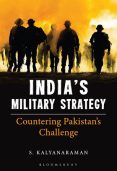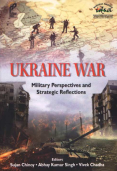Hybrid Warfare: The Changing Character of Conflict
- Publisher: Pentagon Press
A scan of recent conflicts indicates blurring lines between war and peace, state and non-state, regular and irregular and conventional and unconventional. The prevailing security environment is radically different from what it was even a decade ago. The probability of conventional conflict between states or groups of states has been steadily declining while, at the same time, sub-conventional conflict is gaining prominence. These small wars, or niggling wars as some have called it, have also been called hybrid, non-linear, gray zone, unrestricted and a plethora of such names. The ontological and epistemological enquiry of these terms is essential to understand if they allude to the same phenomenon through different frames. Are they the convention or an aberration? The book tries to fill this crucial research gap related to the changing character of conflicts in the strategic discourse in India.
- ISBN: 978-93-86618-35-1,
- Price: ₹.995/- $32.95/-
- E-copy available
Human Resource Management in the Armed Forces
Human Resource Management (HRM) in the Armed Forces is a vital issue because its strength has always been the soldier. This monograph analyses the challenges of HRM in the Armed Forces with specific focus on transition of soldiers to a second career, as service personal retire at a comparatively young age when their personal responsibilities are at the peak.
Status Of Jointness In Indian Security Apparatus
Jointness and integration of the military is an inevitable requirement for the modern-day battlefield. The principles underlying these features are inter-service cooperation and economy of effort, both of which are crucial to war fighting. The lack of jointness and integration in the Indian armed forces received an impetus post Kargil. The Kargil Review Committee and Group of Ministers on National Security highlighted the pitfalls in the existing system and made a number of recommendations.
Kautilya’s Arthashastra: Contemporary Issues and Comparison
In order to make a work relevant, scholarly attempts to study the text such as Kautilya’s Arthashastra, and then critically apply it to explain, compare and understand contemporary issues is necessary. This monograph intends to fulfil this aim in a small way.








